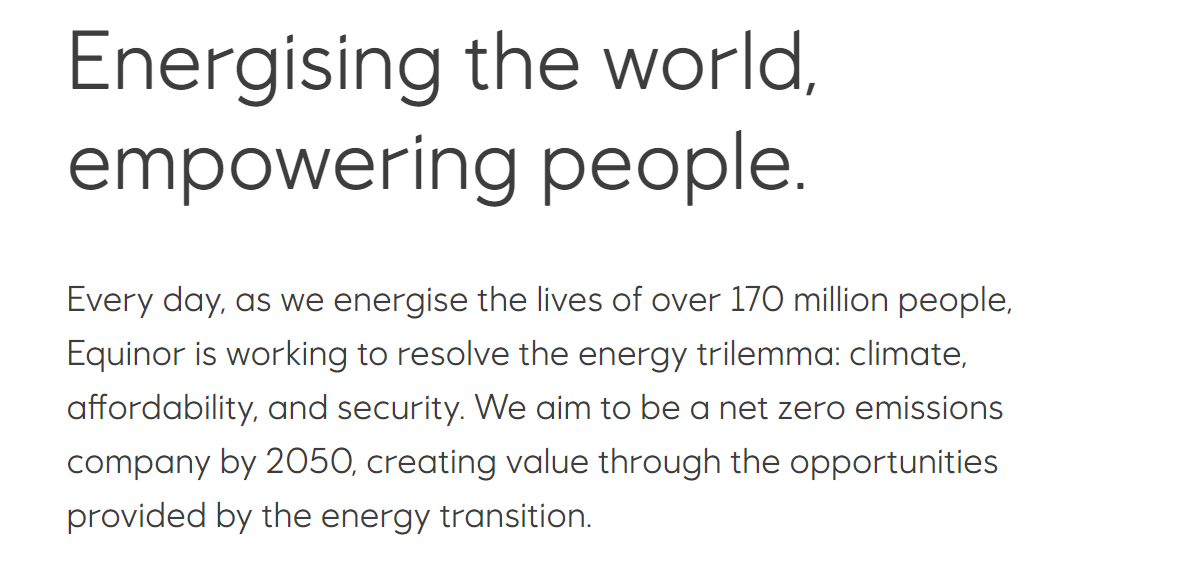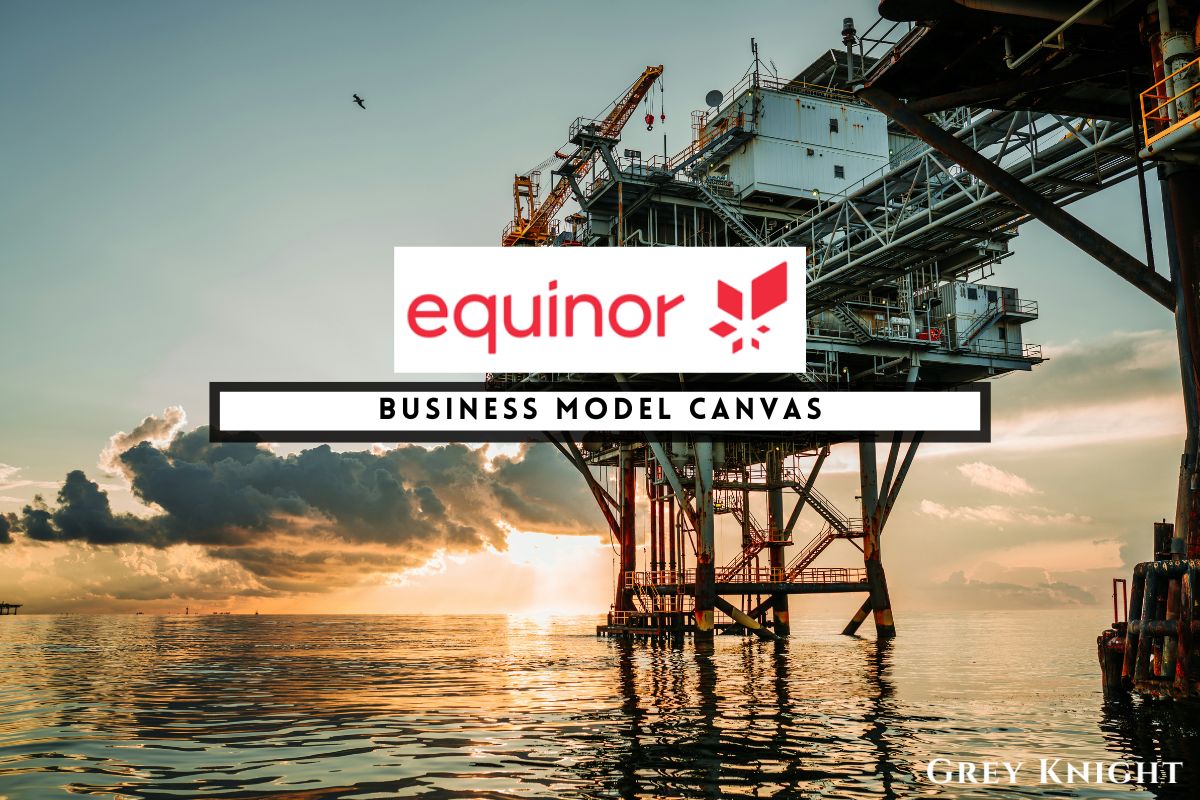Table of Contents
ToggleA Brief History of Equinor
Equinor ASA, formerly known as Statoil, is a Norwegian multinational energy company. The company was founded in 1972 as a state-owned national oil company with a focus on developing Norway’s offshore oil and gas resources in the North Sea.
Over the years, Equinor has expanded its operations internationally and has become one of the largest oil and gas producers in the world. In 2001, the company changed its name from Statoil to Equinor to reflect its broader scope of operations and its emphasis on sustainability and renewable energy.
Equinor has continued to innovate and invest in renewable energy technologies, including offshore wind farms and solar power projects. The company has also made significant contributions to the development of carbon capture and storage (CCS) technology.
In recent years, Equinor has shifted its focus towards becoming a leading energy company in the transition to a low-carbon future, aiming to reduce its greenhouse gas emissions and increase its investments in renewable energy sources.
Today, Equinor operates in over 30 countries and has a strong presence in the Norwegian continental shelf, the North Sea, and the Gulf of Mexico. The company is committed to sustainable energy development and has set ambitious targets to reduce its carbon footprint and become a leader in the energy transition.
Who Owns Equinor?
Equinor ASA, a multinational energy company based in Norway, is owned by a diverse group of shareholders from around the world. The company’s largest shareholders include a mix of institutional investors, mutual funds, and individual investors. As of the latest available data, the top 10 shareholders of Equinor ASA are as follows:
1. The Government of Norway
2. BlackRock, Inc.
3. The Vanguard Group, Inc.
4. Norges Bank Investment Management
5. Folketrygdfondet
6. State Street Global Advisors (US)
7. Capital Group Companies, Inc.
8. Skagen AS
9. DNB Asset Management AS
10. Legal & General Group plc
These major shareholders play a significant role in shaping the company’s activities and decisions, and their ownership stakes reflect their confidence in Equinor ASA’s long-term prospects in the energy sector.
Equinor Mission Statement

Equinor ASA’s mission is to be a leading energy company that is committed to providing reliable, affordable, and sustainable energy solutions to its customers. The company focuses on developing and utilizing innovative technologies, while also actively working to reduce carbon emissions and environmental impact. Equinor aspires to create value for its shareholders, contribute to the communities in which it operates, and be a responsible steward of natural resources.
How Equinor Makes Money?
Equinor ASA operates a diversified business model in the energy sector, with a focus on oil and gas exploration, production, and refining, as well as renewable energy production, including wind and solar power. The company generates revenue primarily through the sale of crude oil, natural gas, and refined petroleum products, as well as electricity from its renewable energy projects. In addition to its traditional energy operations, Equinor also earns income through various business segments, including marketing and trading of energy products, and technology and innovation services for the energy industry. Overall, Equinor’s business model is built on a balanced and sustainable approach to energy production, which allows the company to create value across a range of markets and revenue streams.
Equinor Business Model Canvas
The Business Model Canvas is a strategic management tool that provides a visual representation of a company’s business model. It consists of nine key elements that describe the key partners, activities, resources, customer segments, value propositions, customer relationships, channels, revenue streams, and cost structure of a business.
Customer Segments:
– Equinor ASA targets a diverse range of customer segments including consumers, energy suppliers, industrial companies, and governments.
– The company also caters to both domestic and international markets, with a focus on delivering energy solutions to developed and emerging economies.
Value Propositions:
– Equinor ASA offers a range of value propositions to its customers, including reliable and sustainable energy solutions, innovative technologies, and a commitment to environmental stewardship.
– The company’s value propositions also include a focus on transparency, accountability, and long-term partnerships with its customers.
Channels:
– Equinor employs various channels to reach its customer segments, including direct sales, partnerships with energy suppliers, and online platforms.
– The company also utilizes traditional and digital marketing channels to promote its products and services.
Customer Relationships:
– Equinor ASA maintains strong customer relationships through personalized communication, dedicated account management, and ongoing support and assistance.
– The company also focuses on building trust and transparency in its customer relationships, with a commitment to understanding and meeting its customers’ needs.
Revenue Streams:
– The primary revenue streams for Equinor ASA come from the sale of energy products and services, including oil, gas, and renewable energy solutions.
– Additionally, the company generates revenue through partnerships, licensing agreements, and consulting services in the energy industry.
Key Resources:
– Equinor ASA’s key resources include its energy reserves, production facilities, distribution networks, intellectual property, and human capital.
– The company also leverages technology, financial resources, and strategic partnerships as key resources to support its business operations.
Key Activities:
– The key activities of Equinor ASA include exploration, production, refining, and distribution of energy products, as well as research and development of new energy technologies.
– The company also engages in marketing, sales, customer service, and regulatory compliance as key activities.
Key Partners:
– Equinor ASA collaborates with a network of key partners, including suppliers, distributors, industry associations, academic institutions, and government agencies.
– The company also relies on strategic alliances and joint ventures to access new markets, technologies, and resources.
Cost Structure:
– The cost structure of Equinor ASA includes expenses related to exploration, production, refining, distribution, marketing, and customer service.
– Additionally, the company incurs costs for research and development, human resources, regulatory compliance, and environmental sustainability initiatives.
Equinor’s Competitors
Equinor ASA, a multinational energy company based in Norway, faces competition from various global players in the industry. Some of its top competitors include Royal Dutch Shell, BP, Chevron, ExxonMobil, and Total. These companies are also major players in the oil and gas sector, with a strong presence in exploration, production, refining, and distribution of energy resources. Despite stiff competition, Equinor ASA continues to innovate and adapt to changes in the market to stay competitive and maintain its position as a leading energy company.
Equinor SWOT Analysis
Strengths:
– Strong financial position and stable cash flow
– Diversified portfolio of assets in oil, gas, and renewable energy
– Strong commitment to sustainability and environmental responsibility
Weaknesses:
– Dependence on oil and gas for the majority of revenue
– Vulnerability to fluctuations in commodity prices
– Limited geographic diversification compared to some competitors
Opportunities:
– Expansion into renewable energy and low-carbon technologies
– Growth opportunities in emerging markets
– Strategic partnerships and collaborations in the energy sector
Threats:
– Regulatory and political challenges in the oil and gas industry
– Competition from other energy companies and disruption from new technologies
– Risk of portfolio underperformance in the face of changing energy market dynamics
Concluding Analysis
In my assessment of Equinor ASA’s business model, I am impressed by the company’s focus on sustainability and innovation. Their shift towards renewable energy sources and commitment to reducing carbon emissions demonstrates a forward-thinking approach that will serve them well in the future. With its strong financial position and strategic investments in new technologies, I believe Equinor ASA is well-positioned to navigate the evolving energy landscape. As an analyst, I am optimistic about the company’s prospects and see great potential for growth and success in the years to come. Equinor ASA’s adaptability and long-term vision make them a formidable player in the energy sector, and I look forward to witnessing their continued evolution and success.
Additional Resources
To keep learning and advancing your career, we highly recommend these additional resources:
Business Model Canvas of The Top 1,000 Largest Companies by Market Cap in 2024
A List of 1000 Venture Capital Firms & Investors with LinkedIn Profiles
Peter Thiel and the 16 Unicorns: The Legacy of Thiel Fellowship












